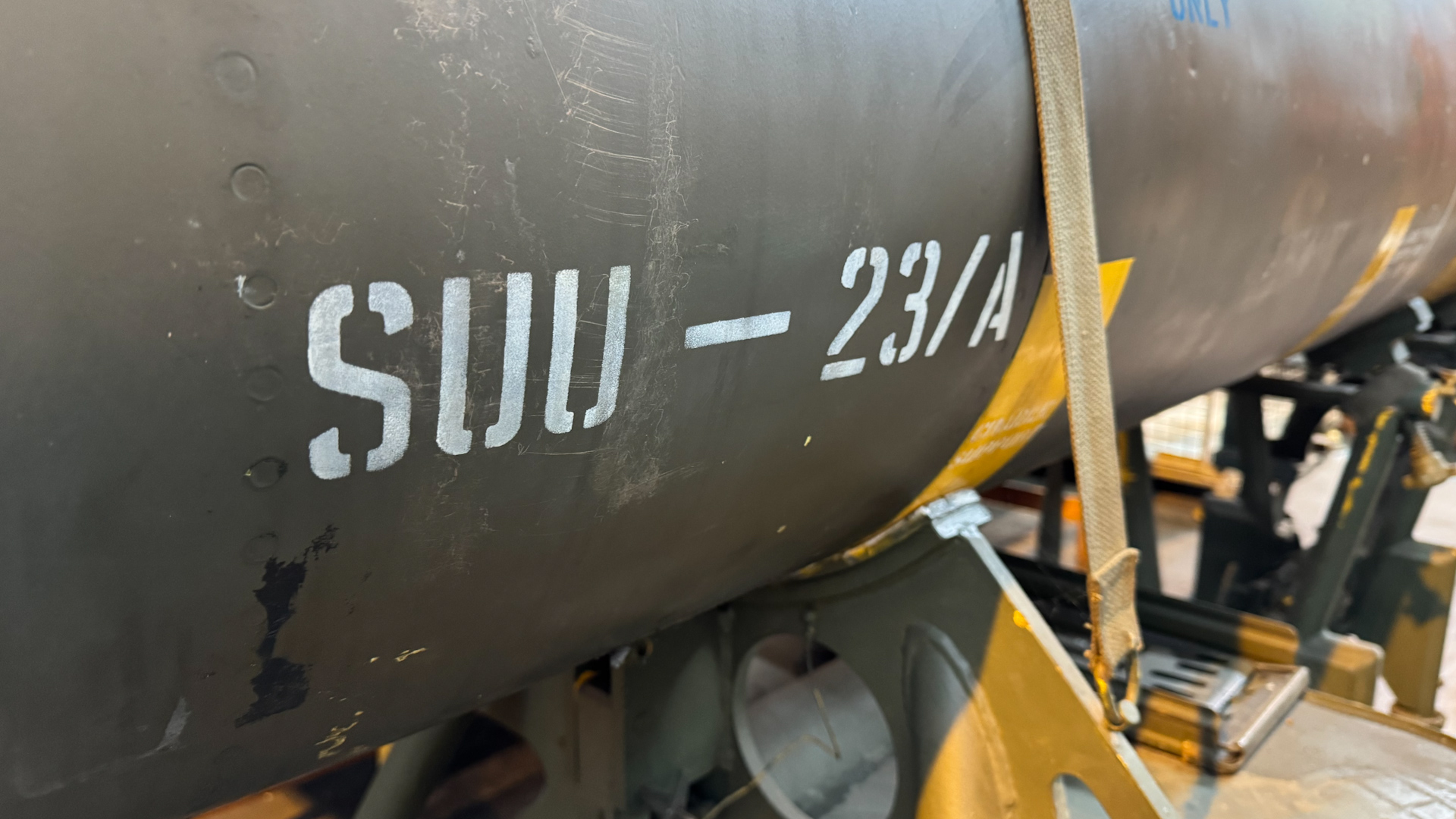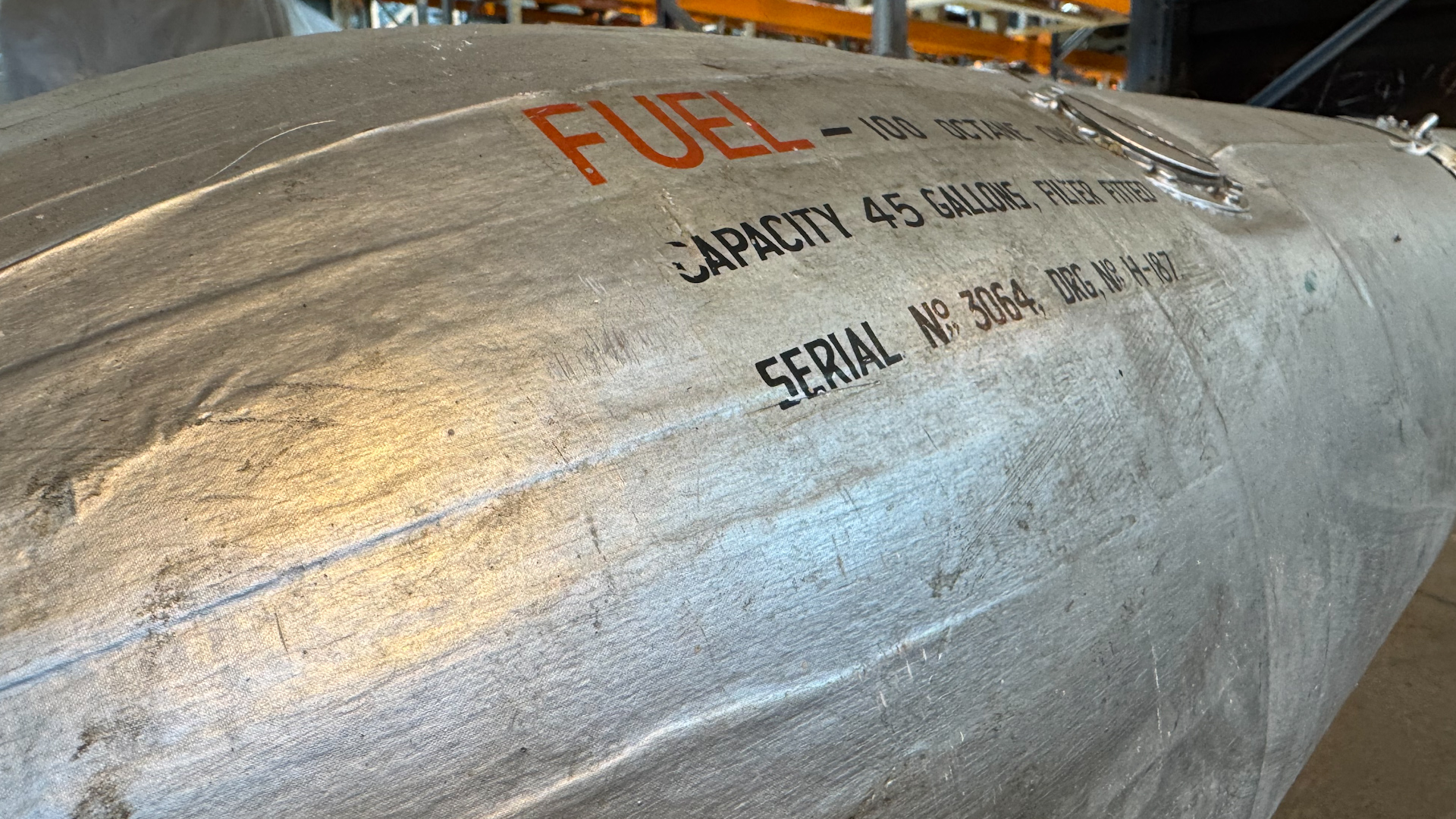Fifty thousand pieces of history: Take a look at the RAF's very own version of The Boneyard
When it comes to discarded military kit, the US Air Force has The Boneyard in the desert – and the Royal Air Force has a hangar.
And this contains more than 50,000 items from the RAF's history – which are set to go on display at the RAF Museum Midlands.
But before that happens, the collection has to be packed up and transported more than 20 miles.
Inside MOD Stafford is a collection of artefacts spanning across the last 100 years of the RAF.
From aircraft engines to air-to-air missiles and the training version of a hydrogen bomb, it's a capsule of history detailing how the RAF adapted to the threats of the day.
Ewen Cameron, the curator of the Reserve Collection at MOD Stafford, explained: "At the moment it's locked away at this store that nobody can visit.
"Wouldn't it be wonderful if you could come and visit?
"That's the whole point of moving everything that you see around here to a new home at the Midland site at Cosford."

Inside the hangar is the SUU-23/A Gun Pod that would have been fitted to a Phantom aircraft.
"It consists of a six-barrel M61A Vulcan Cannon, which is a 20mm weapon," Ewen said.
He pointed out how the Vulcan could fire 100 rounds in just one second.
The collection also holds some smaller artefacts that would have been sent to RAF aircrew if they were captured and made prisoners of war.

Caitlin Wareing-Oksanen, the assistant curator of the Reserve Collection, explained how a pipe and a comb could have helped a downed airman evade the enemy or find their way back home during the Second World War.
"Inside that pipe was stored an escape map," she revealed. The map, which detailed active lines across France, Holland and Germany, was made out of silk.
Caitlin explained why this material was ideal for a PoW.
"Silk is quiet, so if you're sneaking away, you're not going to get that rustling of paper that would give you away," she said.
As well as this hidden map, they would have had a pencil or safety pins that could act as a compass, and a comb with a secret escape tool inside.
"It's always useful to have a blade, and you're going to have your blades taken away from you pretty quickly if you're apprehended. [But] you might not have your comb taken away from you," she added.
"This looks like the comb you might have in your bathroom today, but actually inside this plastic handle, there's a hacksaw blade."

Inside this hangar is a Bristol Hercules engine, that would have been fitted to a Beaufighter, Halifax or Stirling.
"It's probably the second-most utilised engine in the RAF during the Second World War," said Ewen.
The 14-cylinder two-row radial aircraft engine that is in the RAF Museum's collection can be turned on to see exactly how it operates.
Another iconic item is a drop fuel tank made out of paper.
During a metal shortage, the RAF decided to make a fuel tank out of paper so that the Germans could not get their hands on any scrap aluminium or steel when the tank was jettisoned.
Later on, the fuel tank was adapted as an offensive weapon – being filled with napalm and becoming the "paper bomb".

These are just some of the items that will soon go on display at the RAF Museum Midlands at its new Collections Hub, which is due to open in summer 2027.
The curators predict it will take 31,000 hours to package up all the artefacts – an effort dubbed the Crate Escape.
Ella Hewitt, the individual giving manager at the RAF Museum, said: "The Crate Escape isn't just about moving objects, it's about bringing hidden RAF stories of bravery, innovation and sacrifice to light."
The museum is calling on the public to help fundraise for the move.









